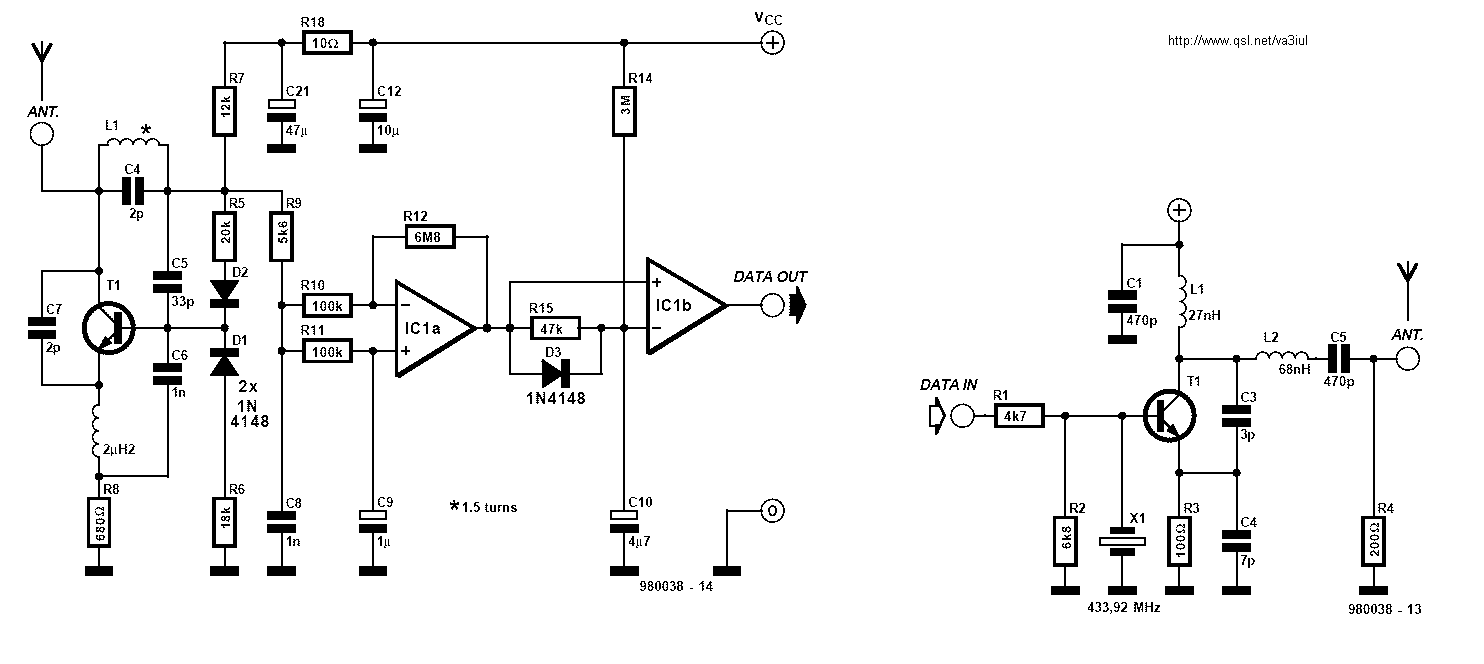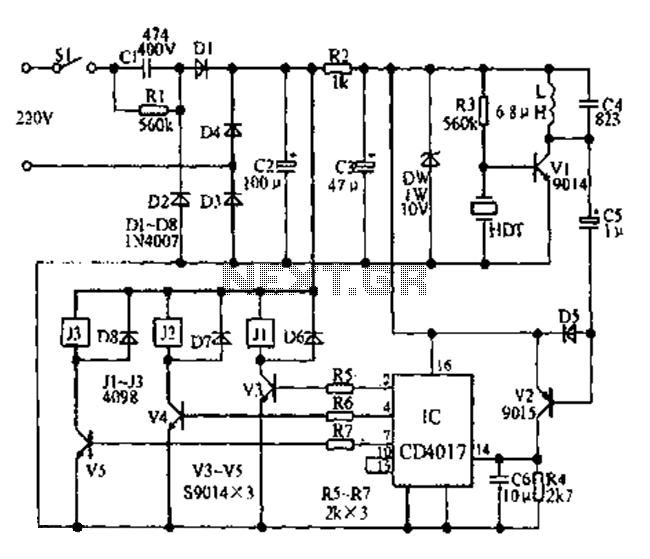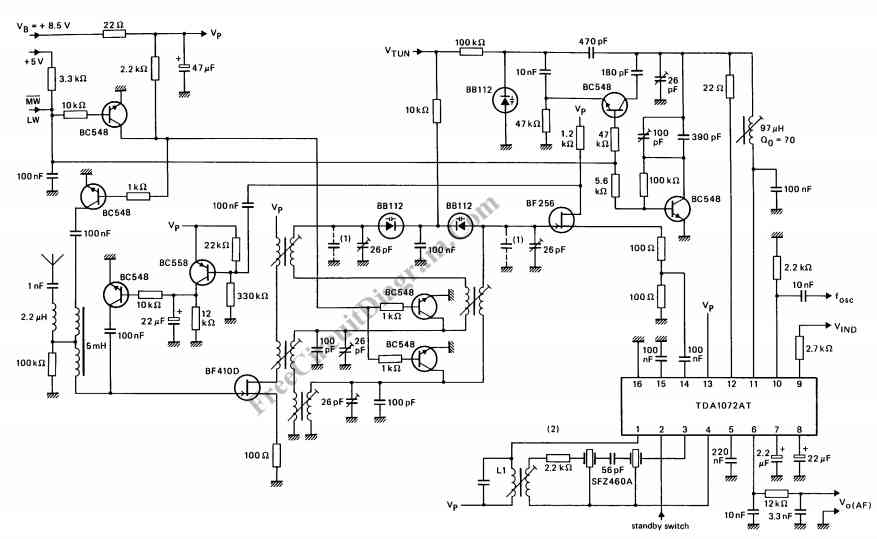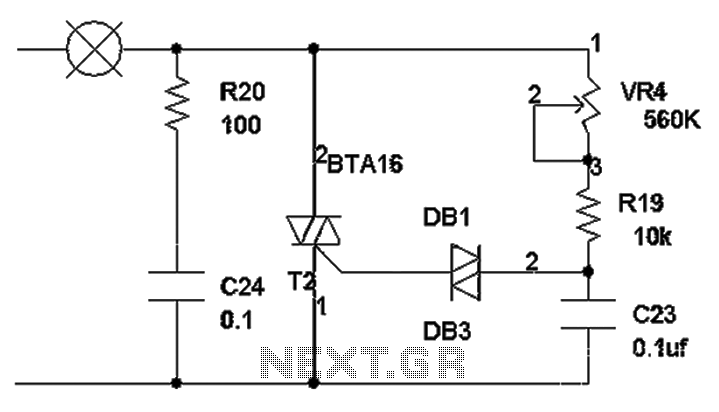
What do I need for a basic RF circuit

The purpose of this circuit is for research and education. Assistance is sought in acquiring components for simple RF circuits, as well as tutorials or schematics. The requester is facing challenges in locating quality resources for beginner-level RF circuit building and is seeking guidance to initiate their learning journey in this area.
The circuit in question is intended for educational purposes, particularly in the field of radio frequency (RF) technology. RF circuits are essential for various applications, including communication systems, signal processing, and wireless technologies. A fundamental understanding of RF circuit design is crucial for anyone looking to explore this domain.
To begin with RF circuit construction, it is recommended to focus on basic components such as resistors, capacitors, inductors, and transistors, which are the building blocks of most RF circuits. A simple RF oscillator circuit can be a good starting point. This circuit typically includes a transistor as the active component, along with passive components like capacitors and inductors to determine the oscillation frequency.
For example, a Colpitts oscillator can be designed using a bipolar junction transistor (BJT) or a field-effect transistor (FET). The oscillator's frequency can be set using a combination of capacitors and an inductor connected to the collector or drain of the transistor. The output can be taken from the collector or drain, and additional stages can be added for amplification or modulation purposes.
In terms of sourcing components, various online electronics retailers provide a wide range of RF components. Websites like Digi-Key, Mouser, and SparkFun offer comprehensive catalogs of electronic parts suitable for RF applications. Additionally, local electronics stores and maker spaces may have the necessary components and can provide valuable hands-on assistance.
For tutorials, numerous online platforms, including YouTube, educational websites, and electronics forums, offer free resources and guides tailored for beginners. Websites such as Instructables and Hackaday feature user-generated projects that can serve as practical examples for novice builders. Engaging with online communities and forums can also provide insights and support from experienced hobbyists and professionals in the field.
Overall, starting with simple projects and progressively advancing to more complex designs will facilitate a deeper understanding of RF circuits and their applications.The purpose of this circuit is for research and education. If anyone knows where I can get parts for simple RF circuits or even a tutorial or schematic that would be really appreciated. Honestly guys, I know you are all probably annoyed with this question and trust me, I wouldn`t bother you all if I could find my own way into RF for beginners but really I`m having the toughest time finding good resources for RF circuit building.
All I`m looking for is something to get me started in the right direction and then I can go from there. I`ve googled about a thousand things to try and find info on this but all I end up getting are a bunch of RC planes/boats sites.
Nothing for just regular basic do-it-yourself circuit building. 🔗 External reference
The circuit in question is intended for educational purposes, particularly in the field of radio frequency (RF) technology. RF circuits are essential for various applications, including communication systems, signal processing, and wireless technologies. A fundamental understanding of RF circuit design is crucial for anyone looking to explore this domain.
To begin with RF circuit construction, it is recommended to focus on basic components such as resistors, capacitors, inductors, and transistors, which are the building blocks of most RF circuits. A simple RF oscillator circuit can be a good starting point. This circuit typically includes a transistor as the active component, along with passive components like capacitors and inductors to determine the oscillation frequency.
For example, a Colpitts oscillator can be designed using a bipolar junction transistor (BJT) or a field-effect transistor (FET). The oscillator's frequency can be set using a combination of capacitors and an inductor connected to the collector or drain of the transistor. The output can be taken from the collector or drain, and additional stages can be added for amplification or modulation purposes.
In terms of sourcing components, various online electronics retailers provide a wide range of RF components. Websites like Digi-Key, Mouser, and SparkFun offer comprehensive catalogs of electronic parts suitable for RF applications. Additionally, local electronics stores and maker spaces may have the necessary components and can provide valuable hands-on assistance.
For tutorials, numerous online platforms, including YouTube, educational websites, and electronics forums, offer free resources and guides tailored for beginners. Websites such as Instructables and Hackaday feature user-generated projects that can serve as practical examples for novice builders. Engaging with online communities and forums can also provide insights and support from experienced hobbyists and professionals in the field.
Overall, starting with simple projects and progressively advancing to more complex designs will facilitate a deeper understanding of RF circuits and their applications.The purpose of this circuit is for research and education. If anyone knows where I can get parts for simple RF circuits or even a tutorial or schematic that would be really appreciated. Honestly guys, I know you are all probably annoyed with this question and trust me, I wouldn`t bother you all if I could find my own way into RF for beginners but really I`m having the toughest time finding good resources for RF circuit building.
All I`m looking for is something to get me started in the right direction and then I can go from there. I`ve googled about a thousand things to try and find info on this but all I end up getting are a bunch of RC planes/boats sites.
Nothing for just regular basic do-it-yourself circuit building. 🔗 External reference





